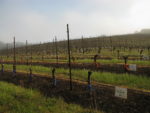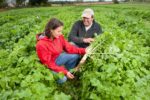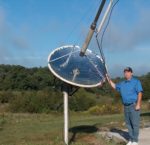Showing 31-40 of 63 results

Integrating Traditional Foods with Aquaponics in the Desert Southwest
The Challenge Cochise County, Arizona, where Aaron Cardona’s Arevalos Farm is located, is classified by the USDA as a food desert with high poverty rates, as well as high rates of diabetes and obesity. To help confront these problems, Cardona decided to look into aquaponics, which had not been experimented with in the desert regions […]

Training in Marine Ornamental Farming for Extension Professionals in Micronesia
The Challenge The Federated States of Micronesia (FSM) and the Republic of the Marshall Islands (RMI) are fledgling sovereign nations. Both nations have low per capita GDP and high unemployment. Like many developing small island nations, the FSM and RMI are economically marginalized. The people of FSM and RMI have skills and resources for aquaculture, […]

Western Pollinator Conservation Planning Short Course
The Challenge Hives of European honeybees, commonly purchased for pollination services, have become more difficult to obtain due to decline from disease and Colony Collapse Disorder (CCD). Native bees can make a significant contribution to crop pollination. Protecting, enhancing, or providing natural habitat on farms is the best way to conserve native pollinators. The USDA, […]

Water Management in Sonoma County Grape Production
The Challenge As in all of California, water is a scarce resource in Sonoma County, a region in Northern California with more than 400 wineries and almost 60,000 acres of vineyards. Wine grape growers face increasing competition for water from different interests, various regulations, and a need to protect threatened and endangered salmonids found in […]

Raising Locally-Adapted and Disease Resistant Queens in Illinois
It is no secret that we are losing bees at higher rates than ever before: On average, beekeepers lose 33 percent of their hives each year. This unfortunate occurrence is known as Colony Collapse Disorder, caused by many different factors such as disease, the varroa mite, pesticide poisoning and habitat loss. And while most […]

Integrated Pest Management in Alabama
Organic vegetable growers in the Deep South face a constant battle with pests. In Alabama, new information is leading to better crop protection and more profitability, thanks to the work of Ayanava Majumdar, Alabama Extension entomologist and Southern SARE state coordinator. As a SARE state coordinator, Majumdar is tasked with bringing sustainable agriculture information […]

Improving Nutrient Use Efficiency in Montana Wheat
"This was a landmark study because we knew we were losing nitrogen, we just didn't know how we were losing it," says farmer Curtis Hershberger. When nitrogen fertilizers are applied to the soil surface using certain application practices, a significant amount can be lost when the nitrogen converts to ammonia gas and enters the atmosphere. […]

For Vegetable Farmers, a New No-Till Tool in Forage Radish
Vegetable farmers who want the myriad benefits of winter cover crops may be setting themselves up for a hectic spring schedule, when the challenge of planting during a narrow window of good weather becomes more complicated by the need to first terminate that winter crop. To make their lives a little easier, University of Maryland […]

From Fruit to Fuel
As tree fruit growers know well, annual harvests do not remove all the fruit from the orchard. A great deal is left behind littering the orchard floor. While pondering his fruit waste problem, Dan West of Macon, Mo., who grows apples, peaches, apricots, nectarines, plums and pears, hit upon a novel approach: Why not turn […]

No-Till and Cover Crop Innovations Increase Dairy Profits
Summertime for dairy farmers in New England is anything but slow. Silage corn must be planted and harvested in a short window to provide high-quality forage for cattle, leaving little time to plant cover crops to replenish the soil. Under pressure to get corn planted early, farmers may delay the first cutting of hay, sacrificing […]